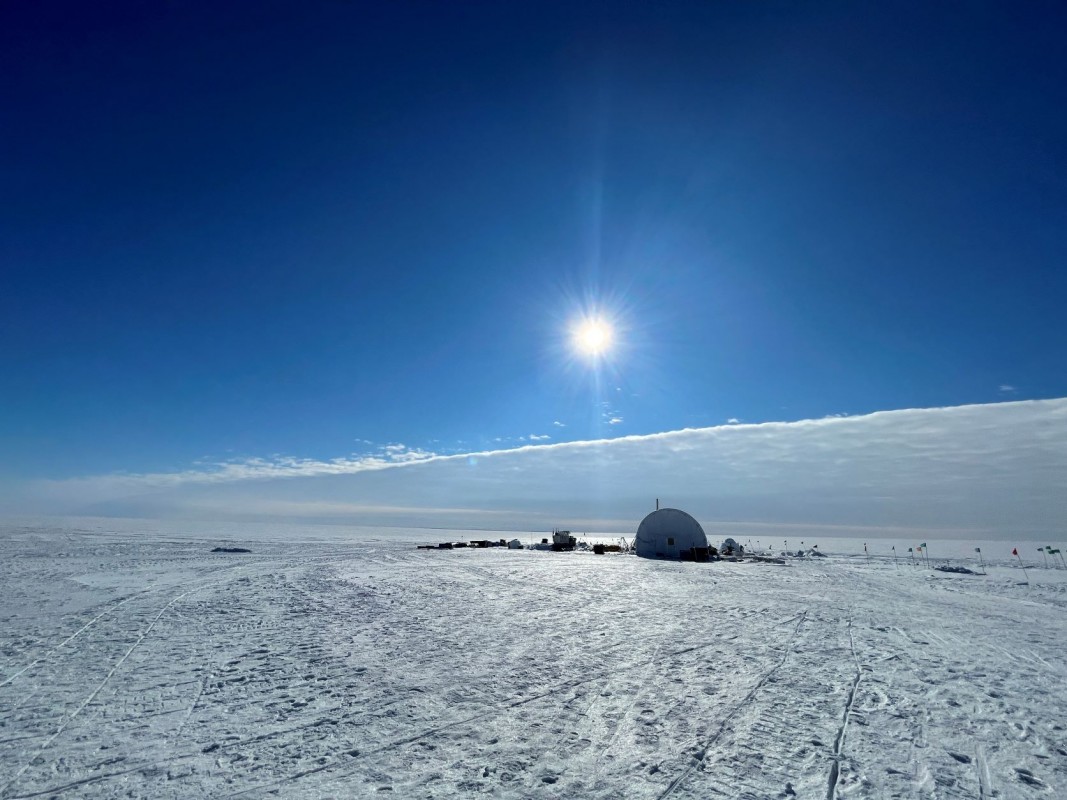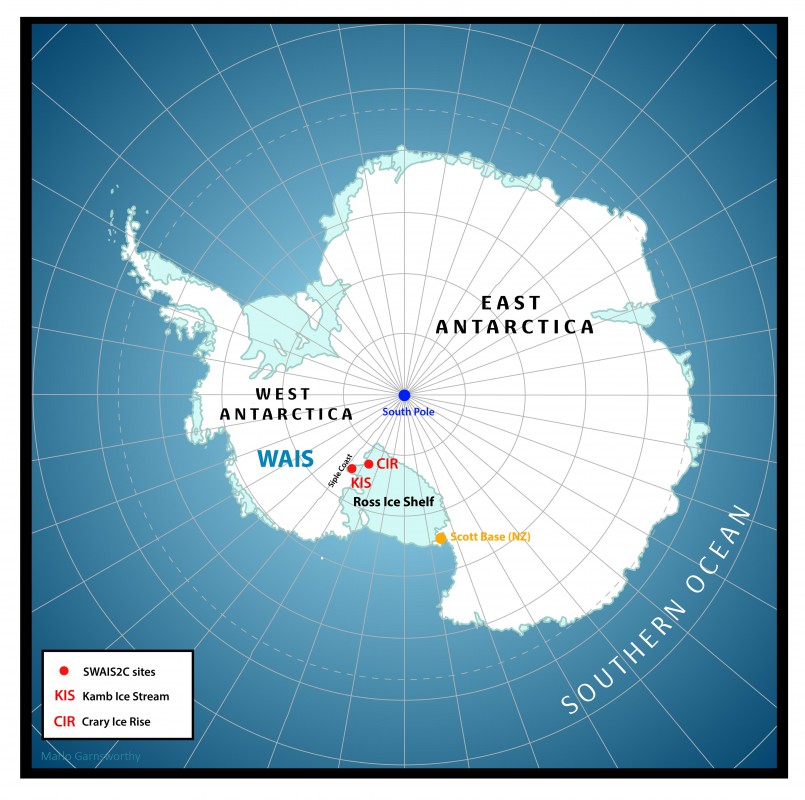Antarctic mission to offer glimpse into our planet’s climate change future
Earth Sciences faculty member is the U.S. lead scientist for the international mission

Consider this a global warming wakeup call: If completely melted, the West Antarctic Ice Sheet holds enough ice to raise sea levels by 5 meters. And at least some of that melting is inevitable, due to the warming Southern Ocean.
Scientists still don’t know how fast or how much the ice will melt. The Sensitivity of the West Antarctic Ice Sheet to 2 Degrees of Warming (SWAIS2C for short) international research project is designed to determine whether the Ross Ice Shelf and West Antarctic Ice Sheet will melt as Earth’s average surface temperature approaches 2°C above those that characterized our planet before the industrial era.
“We know more about the rocks and composition of the moon than we do about the land beneath the West Antarctic Ice Sheet,” said Richard Levy, co-chief scientist of the SWAIS2C project.
For answers, scientists will turn to the geological record, preserved in sediments from regions near the center of West Antarctica deposited during warmer times in Earth’s history.
On Nov. 16, a team of drillers, engineers and researchers leave from New Zealand to drill up to 200 meters below the seafloor on the southeast edge of the Ross Ice Shelf. Antarctic field operations on the Kamb Ice Shelf will continue through 2024. A second field season will begin in November 2024 at the Crary Ice Rise, co-led by Binghamton University Associate Professor of Earth Sciences Molly Patterson, the U.S. lead scientist, and Huw Horgan of New Zealand and Switzerland.
“We will be following with keen interest the success of the first season of drilling, after which the drilling system will be relocated to a new site on the Crary Ice Rise, where we can expand our knowledge of the history of the West Antarctic Ice Sheet,” Patterson said. “The history from both drilling sites is important to enhance the ability of numerical climate and ice sheet models to better anticipate how the West Antarctic Ice Sheet will respond to various warming scenarios in the future.”
More than 120 people from around 35 international research organizations are collaborating on the SWAIS2C project, including around 25 early-career researchers. SWAIS2C brings together researchers from New Zealand, the United States, Germany, Australia, Italy, Japan, Spain, the Republic of Korea, the Netherlands, and the United Kingdom.
The international team calls SWAIS2C “the discovery for our lifetime” and hopes that results will guide plans to adapt to unavoidable sea level rise while amplifying the imperative to mitigate global greenhouse gas emissions.
“Our approach to drilling is novel and not without risk, but it’s the only way we are going to get those critical samples,” Levy said. “Whatever we recover and discover on this trip will be new to humankind and important in understanding future sea-level rise.”
Total project operations and logistics will cost U.S. $5.4 million. Significant additional funding and in-kind contributions have been provided by the Natural Environment Research Council, Alfred-Wegener-Institute Helmholtz Centre for Polar and Marine Research, Federal Institute for Geosciences and Natural Resources, National Science Foundation, German Research Foundation, Istituto Nazionale di Geofisica e Vulcanologia, Korea Polar Research Institute, National Institute of Polar Research, Antarctic Science Platform, Leibniz Institute for Applied Geophysics, AuScope, and the Australian and New Zealand IODP Consortium. This project is the first in Antarctica for the International Continental Scientific Drilling Program (ICDP) and follows other successful international Antarctic geological drilling programs such as ANDRILL.
Logistical support comes from Antarctica New Zealand, in collaboration with the United States Antarctic Program. Drilling is funded and supported by the ICDP. The SWAIS2C Project Manager is GNS Science and the Drilling Services Provider is Te Herenga Waka—Victoria University of Wellington.
The research team will also include scientists and students from several U.S. institutions, who will participate in the study and interpretation of the recovered sediment cores. Three U.S. scientists will travel to Antarctica and work at the SWAIS 2C drill site from November to December: Alex Michaud of The Ohio State University, Jason Coenen of the University of Nebraska-Lincoln and Denise Kulhanek, affiliated faculty of Binghamton University.


